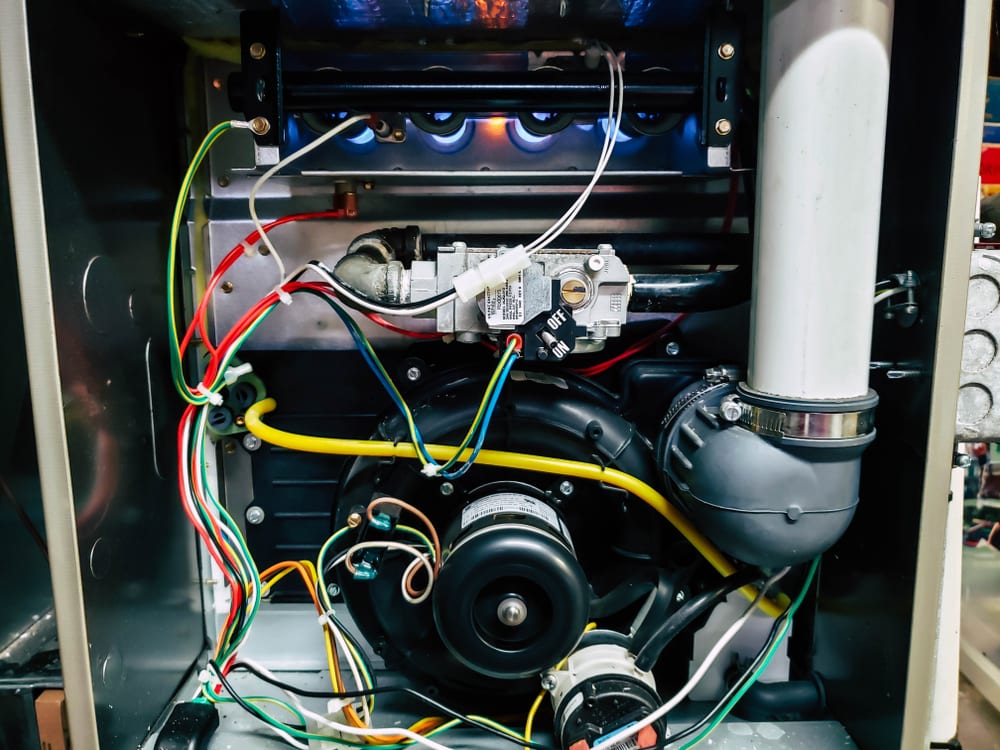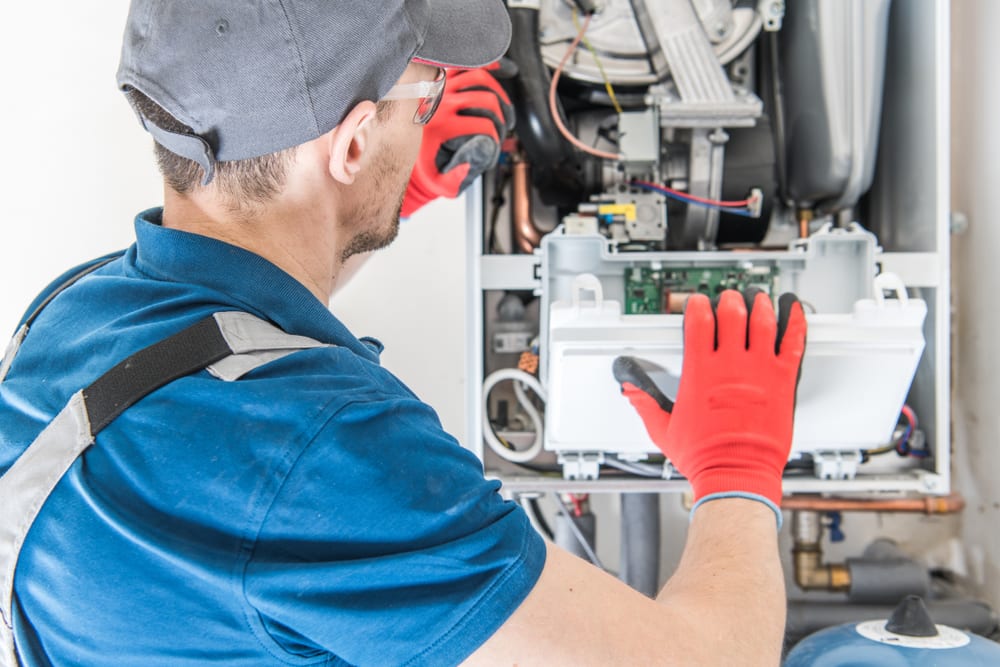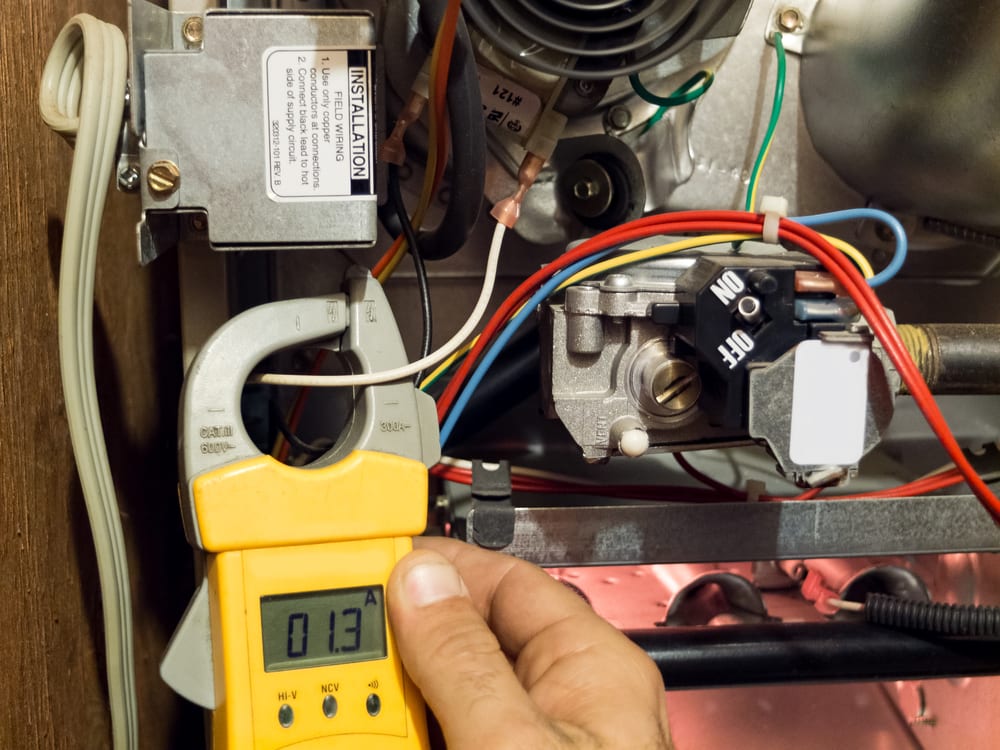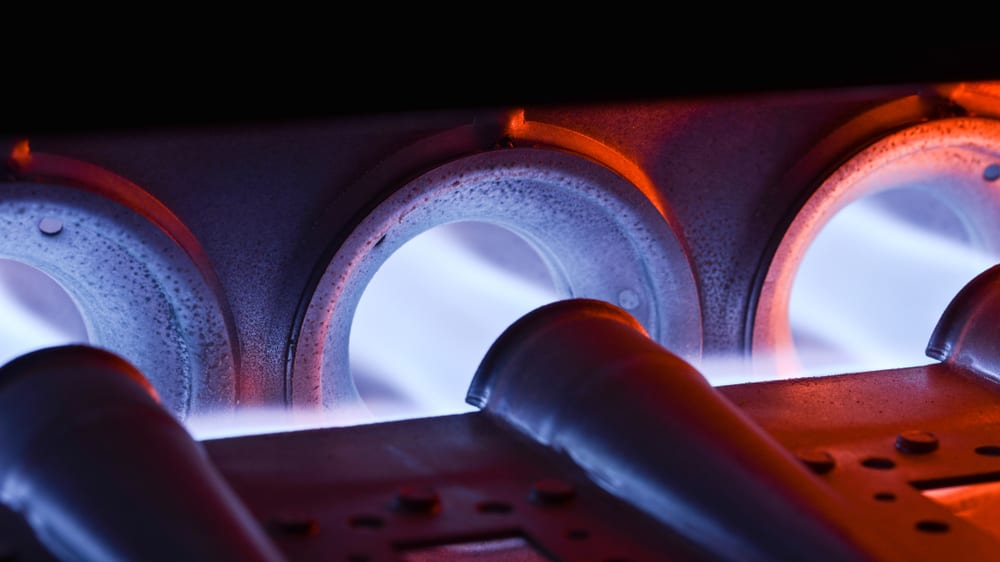
Are you undergoing work on your furnace and have noticed a circular contraption? Did you find out it’s a furnace pressure switch, but don’t know what that is? When it comes to household DIY, you need to be sure about everything you are doing. This caution is also valid when it comes to furnace upkeep. If you attempt do-it-yourself (DIY) solutions without full knowledge, you could break something beyond repair. To help you diagnose the issue with your system, we have created an outline of what a furnace pressure switch is.
Table of Contents
How Does a Pressure Switch Operate?
A furnace pressure switch is exactly that, a switch. It’s the puck-shaped component found external to the furnace. Its sole job is controlling the power that comes from the source to the furnace. Think of a tap. When you turn the handle, water comes flowing out. The furnace pressure switch does the same but with electricity. When the switch is closed, electrical currents come flowing into the furnace. When it is open, nothing can get through.
Another difference between a tap and a pressure switch, taps are turned manually. A furnace pressure switch is controlled automatically by pressure from the inducer. The Inducer fan connects to your pressure switch, usually through a visible rubber tube.
The inducer fan, or the draft inducer, is turned on and creates suction. That suction is what activates the furnace pressure switch. Once the switch is activated, it allows the current to flow to the igniter, which heats your furnace. This process is a safety precaution. If the pressure switch isn’t receiving enough suction due to a malfunction, it will not turn on. By stopping the furnace from igniting, it prevents harmful situations from happening.
High-Pressure Switch Variation
Furnaces come in many different sizes and different heat dispensing options. In addition, different furnace models can be assembled with various types of components depending on the efficiency of the system. If your furnace has the option to pump out more heat, this is because it has a two-stage function. Most furnaces have a single-stage process that pumps out heat at the same level.
A two-stage process allows you to have standard heat and then the option to have a second level for more warmth. Each stage will require a different level of suction to come from the inducer. High-pressure furnace switches, or dual pressure switches, allow for these different levels. Low heat will need less ventilation, so the switch will need less suction to turn on. Higher heat will need higher suction before it turns on.
Tips & Insights: Top Reasons Your Air Conditioner Won’t Turn Off
Reasons Your Furnace Blower Motor Won’t Turn On
If your furnace won’t turn on, then that is because the pressure switch has found a problem. It has refused to turn on as a safety precaution, as mentioned above. If there isn’t enough suction, the furnace pressure switch stops the system from igniting. This is because it won’t have enough ventilation to work.
Without enough ventilation, the furnace will burn the fuel and have nowhere to pump the fumes. These fumes can leak out of the furnace and fill your house with harmful gases. More often than not, the furnace won’t turn on due to a fault with the inducer. Faults in the inducer could be a blockage in the flue/chimney. The flue/chimney extracts the harmful gases emitted from burning fuel.
Another fault would be a crack in the tube connecting the furnace pressure switch to the inducer. If there is a hole in the tube, the switch won’t intake enough suction to turn it on. This outcome will be the same case if the suction tube is loose.
Common Causes of Pressure Switch Failure
That’s not to say the pressure switch cant break. The furnace pressure switch connects to a power source via wiring. If those wires come loose or break altogether, then the pressure switch won’t work.
Another cause would be your pressure switch is that it’s getting old. The longer you have your furnace pressure switch, the more it becomes worn out. If it’s worn out, it can become temperamental, working some days but not others.
Suppose you are having trouble lighting your furnace and can’t work out why. Maybe it’s time to replace your pressure switch.
What To Do When Your Pressure Switch Does Fail
You can do a few things to check the furnace pressure switch without having to call someone out to do it for you. When the furnace starts running, listen out for the click of the gas valve opening. This usually happens after roughly 30 seconds. The click will show it’s the ignitor that isn’t working.
If you don’t hear the click, check to see if you can hear a rattling in the inducer. If you do, turn the power off and, once cooled, remove the inducer fan and potentially replace it. If you don’t hear a rattling, carefully remove the rubber pipe linking the switch and the inducer. If it’s loose, tighten it a bit. If it’s got a hole in it, either patch the hole or replace the pipe. Check the flue/chimney for blockages. If found, then remove the obstruction.
Tips & Insights: Why Do I Hear a Humming Noise Inside My Air Conditioner?
How To Replace a Pressure Switch
If you, unfortunately, have to replace the switch, don’t worry too much. It’s relatively easy.
- Make sure to turn the power off. This will stop you from getting hurt.
- Disconnect the wires and the rubber hose that connect to the pressure switch.
- Remove the switch from the bracket and potentially the bracket as well. If your new pressure switch has a new bracket, then you will want to replace that too.
- Attach the new switch to the furnace, and replace the wires and the rubber pipe.
- Turn the power back on, and you are done.
Pressure Switch Importance
Now you know the importance of a furnace pressure switch. Hopefully, you will have more understanding of how to fix it when it doesn’t turn on. Check the rubber pipe for cracks. Check the flue/chimney for blockages. Listen for the click and rattling. Of course, when wanting professional assistance instead, Fenwick Home Services is here to help.
Our staff of licensed technicians offers reliable furnace repair and installation services to homes in Jacksonville and other areas of Florida. In addition, we offer other types of heating and cooling services such as air conditioning repair and heat pump tune-up. Our experienced technicians offer flexible scheduling options to homes with malfunctioning heaters. Whether you want a furnace installed or a mini-split system repaired, our team has you covered. Contact us today at (904) 217-5694 for fast, reliable emergency heating services!
Tips & Insights: 4 Reasons Your Furnace Fan Not Working & Troubleshooting Steps




